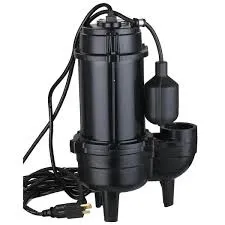English
- Afrikaans
- Albanian
- Amharic
- Arabic
- Armenian
- Azerbaijani
- Basque
- Belarusian
- Bengali
- Bosnian
- Bulgarian
- Catalan
- Cebuano
- Corsican
- Croatian
- Czech
- Danish
- Dutch
- English
- Esperanto
- Estonian
- Finnish
- French
- Frisian
- Galician
- Georgian
- German
- Greek
- Gujarati
- Haitian Creole
- hausa
- hawaiian
- Hebrew
- Hindi
- Miao
- Hungarian
- Icelandic
- igbo
- Indonesian
- irish
- Italian
- Japanese
- Javanese
- Kannada
- kazakh
- Khmer
- Rwandese
- Korean
- Kurdish
- Kyrgyz
- Lao
- Latin
- Latvian
- Lithuanian
- Luxembourgish
- Macedonian
- Malgashi
- Malay
- Malayalam
- Maltese
- Maori
- Marathi
- Mongolian
- Myanmar
- Nepali
- Norwegian
- Norwegian
- Occitan
- Pashto
- Persian
- Polish
- Portuguese
- Punjabi
- Romanian
- Russian
- Samoan
- Scottish Gaelic
- Serbian
- Sesotho
- Shona
- Sindhi
- Sinhala
- Slovak
- Slovenian
- Somali
- Spanish
- Sundanese
- Swahili
- Swedish
- Tagalog
- Tajik
- Tamil
- Tatar
- Telugu
- Thai
- Turkish
- Turkmen
- Ukrainian
- Urdu
- Uighur
- Uzbek
- Vietnamese
- Welsh
- Bantu
- Yiddish
- Yoruba
- Zulu
Telephone: +86 13120555503
Email: frank@cypump.com
Aug . 19, 2024 19:57 Back to list
Innovative Solutions for Efficient Slurry Pumping and Material Handling Systems
Comprehensive Solutions for Slurry Pumping and Handling
In various industrial applications, the effective management of slurries is crucial. Slurries, which are mixtures of liquids and solids, are commonly encountered in industries such as mining, construction, wastewater treatment, and food processing. Due to their abrasive nature and varying viscosities, handling slurries requires specialized equipment and techniques to ensure efficiency, safety, and reliability. This article explores comprehensive solutions for slurry pumping and handling, focusing on advanced technologies, best practices, and the importance of choosing the right equipment.
Understanding Slurry Characteristics
Before implementing a slurry pumping solution, it’s essential to understand the characteristics of the slurry itself. Slurries can vary significantly in terms of particle size, density, and composition. These factors influence the choice of pumping equipment and the overall system design. For instance, highly viscous slurries may require pumps that can provide higher torque and pressure, while slurries with abrasive particles need materials resistant to wear and tear. By closely analyzing these characteristics, industries can select the most suitable pumping solutions tailored to their specific needs.
Choosing the Right Pumping Equipment
There are several types of pumps available for handling slurries, including centrifugal pumps, positive displacement pumps, and submersible pumps. Each type has unique advantages and limitations. Centrifugal pumps are widely used for their efficiency and ability to handle large volumes of liquid. However, they may struggle with highly viscous or abrasive slurries, where positive displacement pumps may be more effective. Positive displacement pumps provide consistent flow rates and can handle thick materials, making them ideal for many slurry applications.
When selecting a pump, it is also crucial to consider the material of construction. Pumps made from high-chromium alloys or rubber linings can significantly enhance durability when dealing with abrasive slurries. Additionally, ensuring the right seal technology is essential to prevent leaks and ensure safe operation.
System Design and Integration
'comprehensive solutions for slurry pumping and ...'

An effective slurry handling system goes beyond just the pump itself. Proper system design includes considerations such as piping layout, joint fittings, and the placement of the pump in relation to other equipment. Minimizing bends and using appropriate pipe diameters can significantly reduce friction loss and improve overall efficiency.
Moreover, integrating monitoring systems can enhance performance. Using flow meters, pressure gauges, and temperature sensors allows for real-time data collection, enabling operators to monitor the system’s health and make adjustments as necessary. Such proactive measures can enhance reliability and reduce downtime, ultimately leading to cost savings.
Operational Best Practices
Implementing operational best practices is vital for the effective management of slurry pumping systems. Regular maintenance, including checking for wear and tear, inspecting seals, and cleaning filters, can prevent unexpected failures and prolong equipment life. Training operators on handling and managing slurries can further ensure that the system runs smoothly and efficiently.
Additionally, it is essential to develop a comprehensive safety plan. Slurries can pose risks, including slips, spills, and exposure to hazardous materials. Ensuring that proper personal protective equipment (PPE) is worn and that safety protocols are followed can mitigate these risks.
Conclusion
In summary, the effective handling and pumping of slurries are critical in numerous industrial settings. By understanding the characteristics of slurries, choosing appropriate equipment, designing efficient systems, and adopting best practices, industries can achieve comprehensive solutions for slurry management. Investing in the right technology and practices not only enhances operational efficiency but also ensures safety and environmental compliance, ultimately leading to a more productive and sustainable operation.
-
ISG Series Vertical Pipeline Pump - Chi Yuan Pumps Co., LTD.|High Efficiency, Energy Conservation, Low Noise
NewsJul.29,2025
-
ISG Series Vertical Pipeline Pump-Chi Yuan Pumps Co., LTD.|High Efficiency&Energy-Saving
NewsJul.29,2025
-
ISG Series Vertical Pipeline Pump - Chi Yuan Pumps Co., LTD. | High Efficiency, Energy-Saving
NewsJul.29,2025
-
ISG Series Pipeline Pump - Chi Yuan Pumps | High Efficiency, Low Noise
NewsJul.29,2025
-
High-Efficiency Vertical Slurry Pumps for Mining & Industry Solutions
NewsJul.29,2025
-
High-Efficiency Pipeline Pump Solutions for Every Pipeline Pump Station
NewsJul.29,2025










